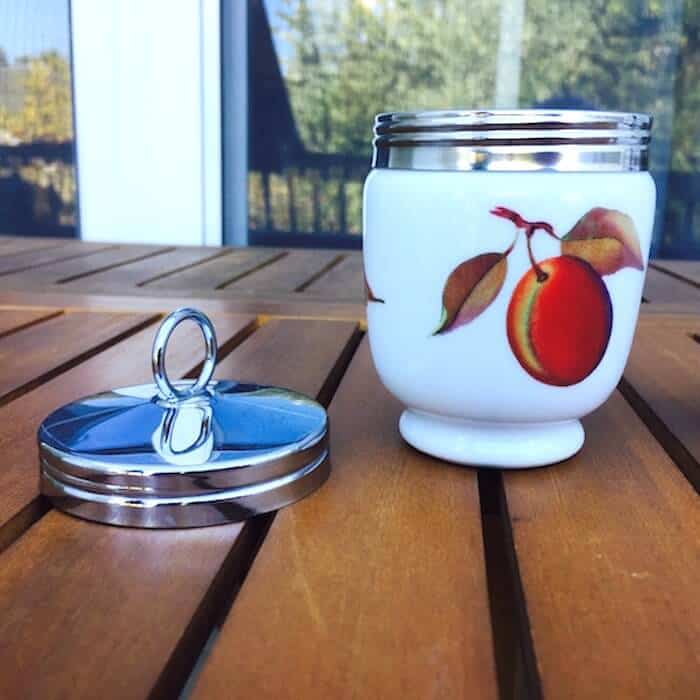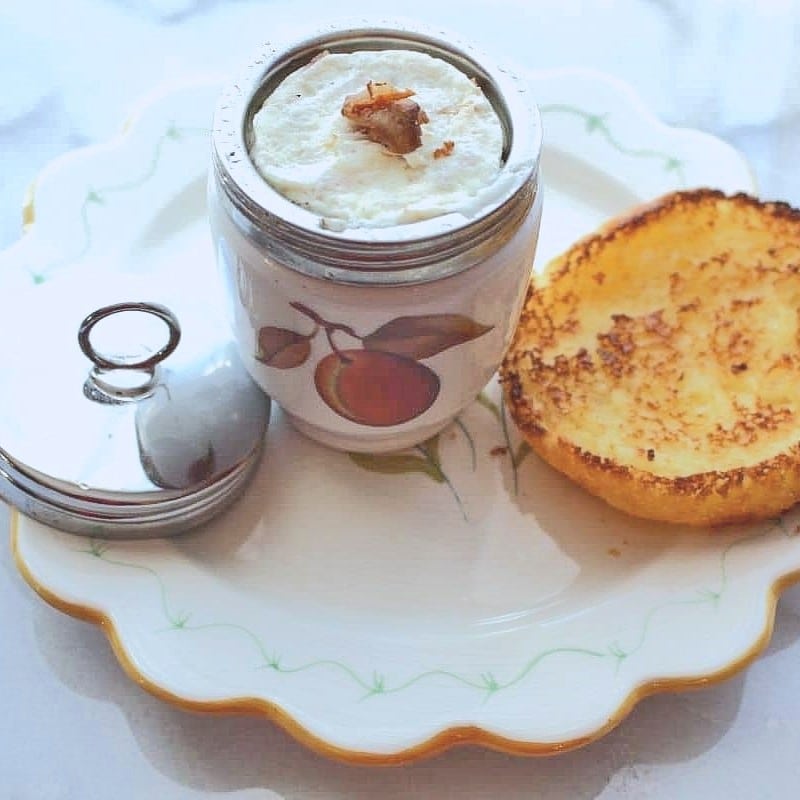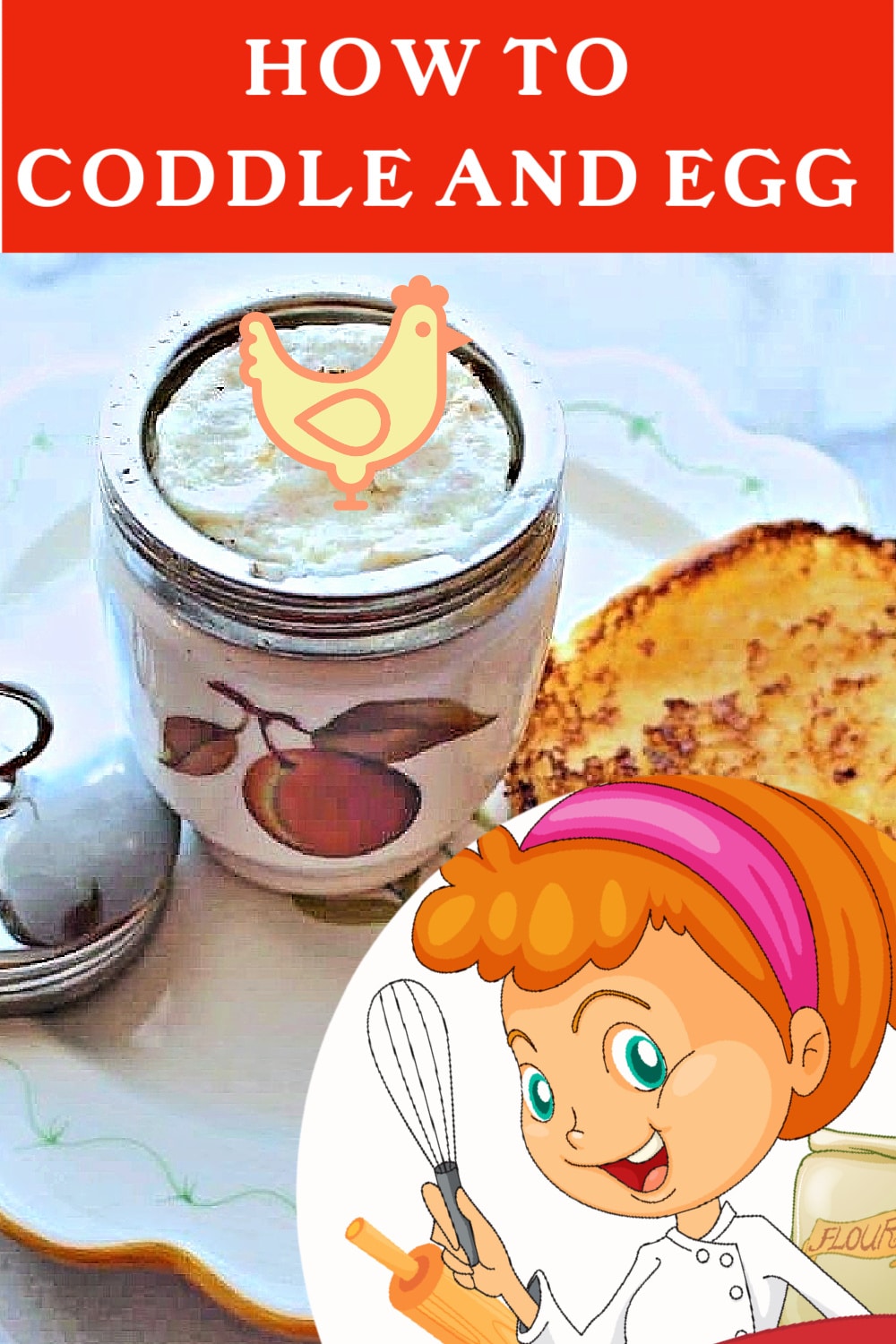Coddled eggs with tender whites and runny yolks look and taste divine. To coddle an egg you gently and slowly cook it in hot water, almost to the boiling point.
Coddled eggs are not poached eggs. Poached eggs are dropped directly into boiling water and coddled eggs are cooked inside a container that is set in hot water
Making Coddled Eggs - Tips And Tricks

Egg Coddler with peach design
What You Need
You will need an egg coddler, water pot, and tongs. If you add bits of onion, as I have, you will need a knife and cutting board. To add your favorite seasonings you will need measuring spoons and maybe a cheese grater.
We purchased our old-fashioned egg coddler from Replacements.com, but you can find new ones just like ours on Amazon: the Royal Worcester Evesham Single Egg Coddler.
The Basics Of Coddling An Egg
Eggs should be placed in a small dish or coddling container and then partially submerged in hot water for 7 to 8 minutes. Once done they will have a velvety texture with a very soft white. Season the eggs to your taste with salt and pepper or various herbs for extra flavor.
Butter the inside of the egg coddler to flavor the egg and allow it to be removed more easily.
I use regular kitchen tongs to remove the egg coddlers from the pot of water. Our coddler is big enough to fit two eggs each, but coddlers come in different sizes. You may also use a ramekin or similar dish to coddle the eggs.
One Important Tip
The most important thing about making coddled eggs is to butter the inside of the coddler thoroughly. Otherwise, it will be a devil to clean!
Great topping choices are Canadian bacon, chopped fresh chives, and cheddar cheese.
Coddled Eggs Recipe
Ingredients
- 2 teaspoons butter
- 4 eggs
- 2 tablespoons Pecorino Romano Cheese shredded
- 1 strip of bacon cooked & crumbled
- 2 tablespoons onions chopped and sautéed in 1 tablespoon olive oil
- ¼ teaspoon Herbes de Provence
Instructions
-
Butter the inside of 2 egg coddlers.
-
Break 2 eggs into each coddler.
-
Top with crumbled bacon, sautéed onions, Herbes de Provence and cheese.
-
Screw the tops on the coddlers
-
Put the coddlers in a pot that is big enough to allow them to sit side-by-side without touching each other.
-
Add water to the pot to reach halfway up the sides, and bring the water to a boil.
-
When the water boils, reduce the heat and simmer for 6-½ to 7 minutes.
-
Remove the coddlers from the pot and let them rest for about a minute. Remove the coddler tops and serve.

Perfect Coddled Eggs In An Egg Coddler
Author: Recipe Idea Shop
Ingredients
- 2 teaspoons butter
- 4 eggs
- 2 tablespoons Pecorino Romano Cheese shredded
- 1 strip of bacon cooked & crumbled
- 2 tablespoons onions chopped and sautéed in 1 tablespoon olive oil
- ¼ teaspoon Herbes de Provence
Instructions
- Butter the inside of 2 egg coddlers.
- Break 2 eggs into each coddler.
- Top with crumbled bacon, sautéed onions, Herbes de Provence and cheese.
- Screw the tops on the coddlers
- Put the coddlers in a pot that is big enough to allow them to sit side-by-side without touching each other.
- Add water to the pot to reach halfway up the sides, and bring the water to a boil.
- When the water boils, reduce the heat and simmer for 6-½ to 7 minutes.
- Remove the coddlers from the pot and let them rest for about a minute. Remove the coddler tops and serve.






